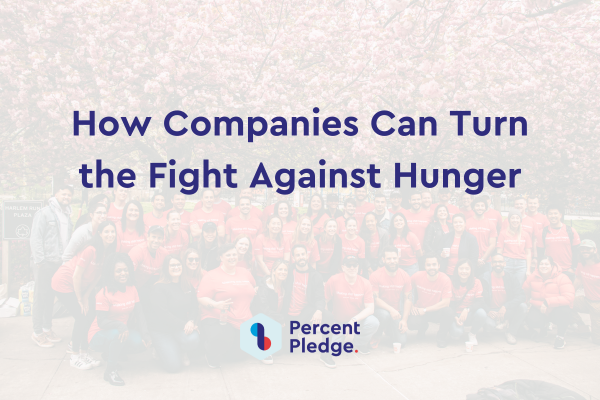In today's dynamic work environment, companies are continuously searching for ways to engage their employees while enhancing their brand reputation. One powerful tool that has emerged is volunteer time off (VTO). Not only does VTO allow employees to give back to causes they care about, but it also serves as a strategic asset for companies looking to build a purpose-driven culture. Explore why VTO is crucial for modern workplaces, the objectives behind these policies, and how VTO compares to traditional time off.
Strategic importance of volunteer time off (VTO)
Volunteer time off is more than just a benefit—it's a strategic advantage in today's competitive job market. As companies compete for top talent, particularly among Millennials and Gen Z, who prioritize purpose-driven work, VTO can set a company apart. Offering VTO shows that a company values not only its employees but also the community and broader societal impact.
VTO as a competitive advantage
Implementing VTO is becoming increasingly important as a differentiator in the talent acquisition and retention space. 76% of employees consider a company’s social and environmental commitments when deciding where to work, per the Cone Communications Millennial Engagement Study. As such, VTO policies can be a deciding factor for job candidates. Moreover, employees who feel supported in their desire to contribute to social causes are more likely to be engaged, satisfied, and loyal to their employers.
Enhancing employee well-being and mental health
Another often overlooked benefit of VTO is its impact on employee well-being and mental health. Encouraging employees to take time off to volunteer not only supports their mental health by giving them a sense of purpose and fulfillment but also fosters a positive work-life balance. This aspect of VTO contributes to reducing burnout, a significant issue in today’s fast-paced work environments.

Key objectives of volunteer time off policies
VTO policies serve several strategic objectives that align with broader corporate goals. These objectives go beyond merely allowing employees to volunteer—they help in shaping the company’s culture, enhancing its brand, and building a stronger, more engaged workforce.
Aligning VTO with company culture and values
One of the primary objectives of VTO policies is to align corporate culture with social responsibility. By supporting causes that resonate with both the company’s mission and its employees' values, VTO policies help create a unified and purpose-driven workforce. This alignment strengthens internal culture, making employees feel more connected to the company’s goals and values.
Building a positive employer brand
In a market where employer reputation plays a crucial role in attracting talent, VTO policies can significantly enhance a company’s brand. Companies known for their commitment to social responsibility and community engagement are more attractive to prospective employees. 64% millennials won’t take a job from a company that doesn’t have strong CSR practices.
Meeting the evolving expectations of the workforce
The modern workforce, especially younger generations, expects more from their employers than just a paycheck. They want to work for companies that are not only profitable but also socially responsible. VTO policies meet these evolving expectations by offering employees a structured way to contribute to social causes during work hours, thus integrating purpose into the workday.

Comparing volunteer time off and traditional time off
While VTO and traditional time off (such as vacation or sick leave) both offer paid leave, they serve distinct purposes and have different impacts on both the employee and the organization.
Purpose and impact
Traditional time off is primarily for personal rest, relaxation, or to address personal matters. Its primary impact is on the individual, providing them with the necessary downtime to recharge. In contrast, VTO is designed to enable employees to engage in volunteer activities. The impact of VTO is dual—benefiting both the employee, who gains a sense of fulfillment from giving back, and the community, which receives the employee’s time and effort.
Integrating VTO with other benefits
VTO can be seamlessly integrated with other employee benefits, such as mental health days or corporate wellness programs, to create a holistic approach to employee well-being. For example, allowing employees to use VTO in conjunction with mental health days can provide a balanced approach to managing stress and avoiding burnout. This integration not only enhances the benefits package but also reinforces the company’s commitment to employee well-being and social responsibility.
Volunteer time off is more than just a nice-to-have perk—it's a strategic tool that modern workplaces can leverage to build a positive culture, enhance their brand, and meet the evolving expectations of the workforce. By offering VTO, companies can differentiate themselves in the competitive job market, attract purpose-driven talent, and foster a more engaged, satisfied, and loyal workforce. As the expectations of employees continue to evolve, integrating VTO into your company’s benefits package is not only beneficial but essential for long-term success.




.png)
